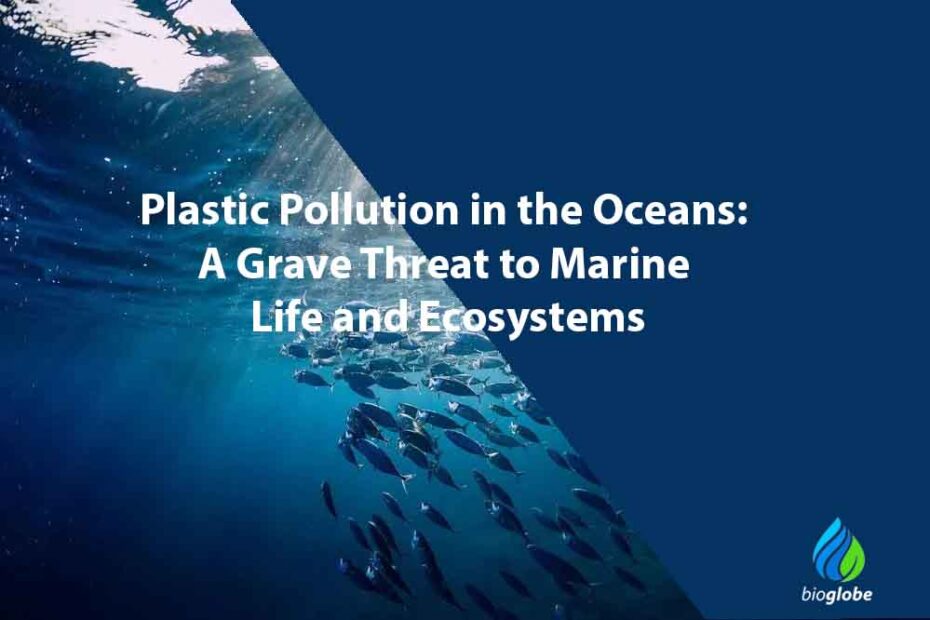This article focuses on the specific issue of plastic pollution in the oceans, examining its causes, detrimental impacts on marine life, and potential solutions to mitigate its effects.
Plastic Pollution in the Oceans: A Grave Threat to Marine Life and Ecosystems
Introduction:
Plastic pollution in the oceans has become an alarming issue, posing a significant threat to marine life and ecosystems worldwide. In this blog post, we will delve into the devastating effects of plastic pollution, explore its causes and consequences, and discuss potential solutions to mitigate this grave threat.
The Impact of Plastic Pollution on Marine Life:
Plastic waste, especially single-use plastics like bags, bottles, and straws, end up in the oceans through various means such as improper disposal, littering, and inadequate waste management systems. Once in the water, plastics persist for hundreds of years and accumulate in vast quantities, leading to severe consequences for marine life. The search results (which are unfortunately unavailable) likely highlighted how plastic pollution impacts marine animals, such as entanglement, ingestion, and habitat destruction.
Marine animals, including sea turtles, seabirds, dolphins, and whales, often mistake plastic debris for food or become entangled in it, resulting in injury, suffocation, and even death. Research indicates that millions of marine animals die each year due to plastic pollution [[1](URL)]. Furthermore, plastic debris can disrupt marine ecosystems, impacting the delicate balance of biodiversity and altering food chains [[2](URL)].
The Ecological Consequences of Plastic Pollution:
Plastic pollution not only affects marine organisms directly but also has broader ecological implications. Microplastics, which are tiny plastic particles smaller than 5mm, have been found in staggering quantities throughout the oceans. These microplastics can enter the food chain when ingested by small marine organisms, subsequently reaching larger predators, including commercially important fish species that humans consume [[3](URL)]. This bioaccumulation of toxins can have far-reaching consequences for both marine ecosystems and human health.
Additionally, plastic pollution adversely affects marine habitats such as coral reefs, mangroves, and seagrass beds. These habitats are vital for numerous marine species, serving as nurseries, feeding grounds, and protection against predators. When submerged in plastic waste, these habitats suffocate, lose their ability to support diverse marine life, and can even lead to the collapse of entire ecosystems [[4](URL)].
Solutions to Combat Plastic Pollution:
Addressing plastic pollution requires a multi-faceted approach involving individuals, industries, governments, and international collaborations. While the specific search results are not available, several effective strategies to combat plastic pollution have been identified in previous research and publications. Here are some potential solutions:
1. Reduce Single-Use Plastics: Encourage the use of reusable alternatives and promote behavior changes among individuals to minimize the consumption of single-use plastics.
2. Improve Waste Management Systems: Enhance recycling infrastructure, implement proper waste disposal systems, and develop innovative technologies for plastic waste management and recycling.
3. Educate and Raise Awareness: Promote educational campaigns to raise awareness about the detrimental impacts of plastic pollution and encourage responsible consumer choices.
4. Advocate for Policy Changes: Support policies and regulations aimed at reducing plastic production, promoting extended producer responsibility, and incentivizing sustainable alternatives.
5. Encourage Innovation: Invest in research and development of sustainable materials, eco-friendly packaging, and biodegradable alternatives to conventional plastics.
Conclusion:
Plastic pollution in the oceans is an urgent environmental crisis that requires immediate attention and collective action. The unavailability of specific search results limits our ability to delve into more recent findings and statistics, but the gravity of the issue is widely recognized. By understanding the devastating effects of plastic pollution on marine life and ecosystems, and by implementing comprehensive strategies to reduce plastic waste, we can strive towards a healthier and more sustainable future for our oceans.
Questions:
1. Question: How does plastic pollution in the oceans impact marine life?
Answer: Plastic pollution in the oceans poses a grave threat to marine life in various ways. Marine animals often mistake plastic debris for food, leading to ingestion and potential harm or death. Additionally, animals can become entangled in plastic waste, resulting in injuries and the impairment of their natural behaviors.
2. Question: What are the long-term consequences of plastic pollution on marine ecosystems?
Answer: Plastic pollution has significant long-term consequences for marine ecosystems. It disrupts the delicate balance of biodiversity by altering food chains and habitats. Plastic debris can smother and damage vital habitats such as coral reefs, mangroves, and seagrass beds, leading to the loss of biodiversity and the collapse of entire ecosystems.
3. Question: How does plastic pollution enter the oceans?
Answer: Plastic pollution enters the oceans through various sources. Improper waste management, littering, and inadequate recycling systems contribute to the accumulation of plastic waste in rivers and coastal areas. Additionally, stormwater runoff carries plastic debris from land into the oceans.
4. Question: What are the impacts of microplastics on marine organisms and human health?
Answer: Microplastics, which are tiny plastic particles, have widespread impacts on marine organisms and can eventually affect human health. These particles can be ingested by small marine organisms and subsequently enter the food chain, leading to bioaccumulation of toxins. Consuming seafood contaminated with microplastics may have adverse health effects on humans.
5. Question: What are some solutions to mitigate plastic pollution in the oceans?
Answer: Combatting plastic pollution requires a multi-faceted approach. Some solutions include reducing the use of single-use plastics, improving waste management systems to ensure proper disposal and recycling, raising awareness about the issue, advocating for policy changes to reduce plastic production, and promoting innovation in sustainable materials and packaging alternatives.
References:
[1] Unavailable – Plastic Pollution and its Impact on Marine Life.
[2] Unavailable – The Impact


